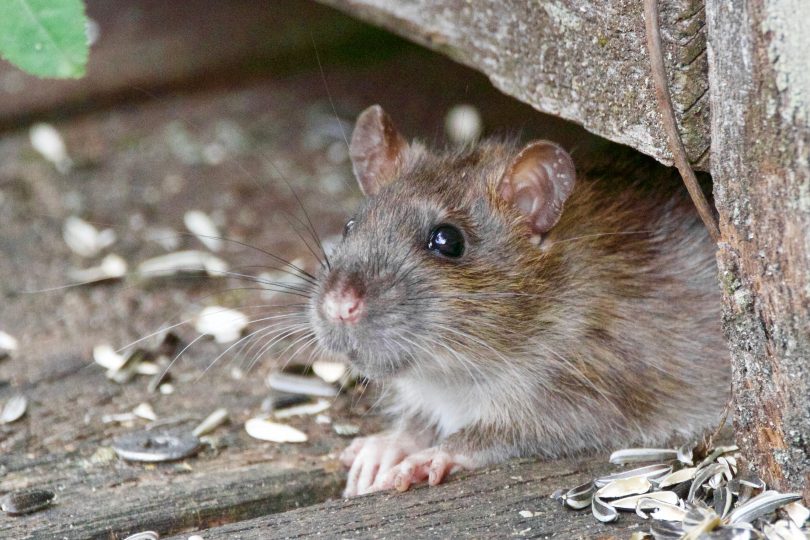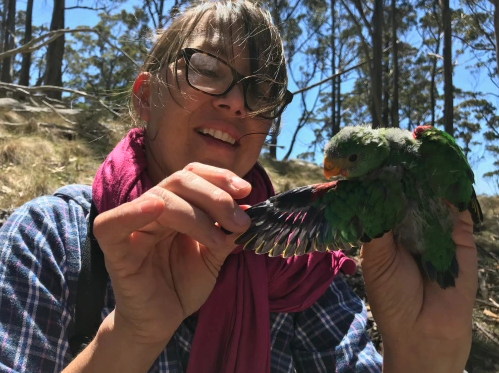
The NSW Government is seeking urgent approval from the Australian Pesticides and Veterinary Medicines Authority to use bromadiolone in NSW to control the ongoing mouse plague across the state. Photo: Supplied.
The NSW Government’s announcement of $50 million to combat the state’s mouse plague is cause for concern because of the risk it poses to other animals, according a Charles Sturt University ecologist.
As part of the announced package, the NSW Government is seeking “urgent approval” from the Australian Pesticides and Veterinary Medicines Authority for farmers to use bromadiolone to control mice on their properties.
NSW Minister for Agriculture Adam Marshall believes it’s the fatal blow needed to control the infestation.
“It’ll be the equivalent of napalming mice across rural NSW,” he said.
Bromadiolone can be bought over the counter in Australia for use at home and around farm buildings, in secure bait stations, but its ability to kill animals other than mice means it’s not permitted for agricultural operations.
Dr Maggie Watson, an ecologist at Charles Sturt University’s Institute for Land, Water and Society in Albury-Wodonga, has criticised bromadiolone use and suggested alternatives for several components of the government’s new package.
She warned that bromadiolone is highly lethal and causes secondary poisoning in wild and domestic animals.
“There are parts of the NSW Government’s package that are a step in the right direction, but the use of bromadiolone puts other animals at risk,” said Dr Watson.

Dr Maggie Watson is an ecologist at Charles Sturt University’s Institute for Land, Water and Society in Albury-Wodonga. Photo: Supplied.
“Because it is highly palatable, it can cause primary poisoning to animals that eat the dead or dying rodents, and has been known to cause problems in a range of animals including domestic dogs, native mammals such as possums, and wetland and sea birds.”
Dr Watson said bromadiolone can leach into low-nutrient soils, bioaccumulate in insects – such as woodlice and cockroaches – and then be passed through the food chain.
“There are several alternative options available that have less risk of secondary poisoning, such as the first-generation rodenticides, warfarin and coumatetralyl for home use, and coumatetralyl and zinc phosphide for crops,” she said.
Dr Watson said the NSW Government’s decision to develop a package that includes investment in research, biological controls and education workshops is worthy, but there are several changes she wants to see.
“First, we need targeted use of first-generation poisons, not second- or third-generation poisons, to get through this current plague,” she said. “Then we need an analysis of systems that can be put into place to mitigate future plagues.”
This could include reliance on natural controls, not just poisons, she said.
“For example, boosting habitat for natural predators such as snakes, monitor lizards and birds of prey,” said Dr Watson.
“Farmer education workshops on the best eradication strategies would inform farmers that first-generation poisons are the best strategy and other poisons – such as bromadiolone – should not be used.”
Dr Grant Singleton has spent more than two decades studying rodent ecology in Australia and South-East Asia, and he said the suggestion of broad-scale application of bromadiolone is certainly a concern.
“The ‘napalm’ claim that the mice would be dead within 24 hours after the use of bromadiolone is incorrect,” he said. “Anticoagulants take three to seven days to kill a mouse.”

CSIRO research showed the benefits of a higher concentration of zinc phosphide as a means of controlling mouse populations. Photo: Supplied.
Dr Singleton said a single feed usually provides a lethal dose so any subsequent poison a mouse consumes leads to a build up of the poison in the system and hence a greater risk to non-target species that feed on mice.
He suggest the risk of secondary poisoning to non-target species is considerably lower with zinc phosphide which, on consumption, generates a toxic gas lethal to mice and rats, which lack a vomiting reflex.
Zinc phosphide-coated wheat bait is commonly used on farms with little environmental residual effect, but research shows it is only lethal in 50 per cent of mice.
Canberra-based CSIRO research scientist Dr Peter Brown said if mice get a sub-lethal dose of zinc phosphide-coated wheat bait, they get sick and won’t go back to eat it again, instead moving onto other food sources.
“Our studies in Canberra repeated some of the work done in the US in 1980s – information we relied on for registration of zinc phosphide in Australia – and on repeated lab work we found the dose rate of poison needed to be double what it was to be effective,” he explained.
The Australian Pesticides and Veterinary Medicines Authority has now issued an emergency permit allowing the concentration of zinc phosphide to be doubled from 25 to 50 milligrams per kilogram.
Dr Brown said at rates of two to three grains per square metre – the conditional use of the bait – the secondary poisoning risk with zinc phosphide is very low.
“The rate of application of the poison is very small in the grand scheme of things,” he said. “There’s always a risk with native animals, but it’d be difficult for them to get a lethal dose.”






